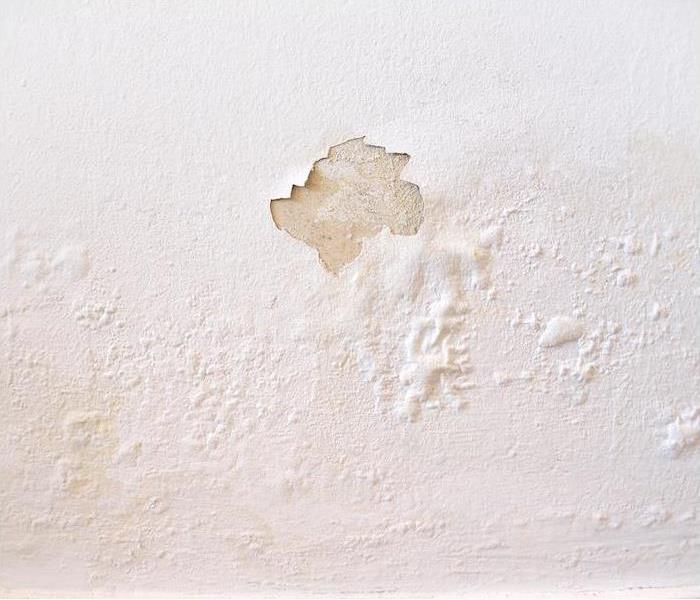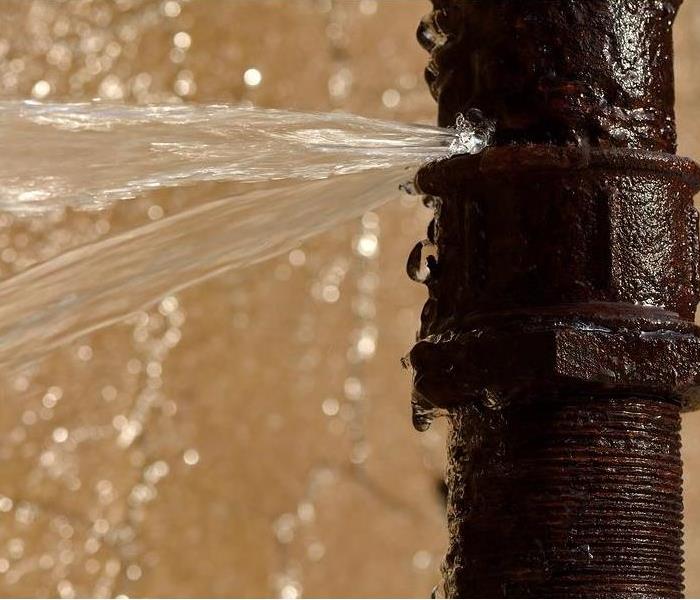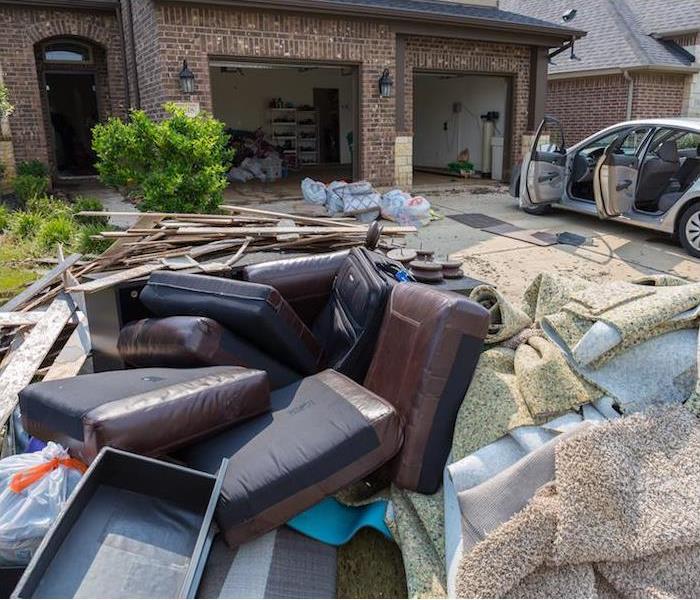Recent Water Damage Posts
Fall Home Maintenance: Guarding Against Water Damage | SERVPRO of Reno Southwest
9/3/2024 (Permalink)
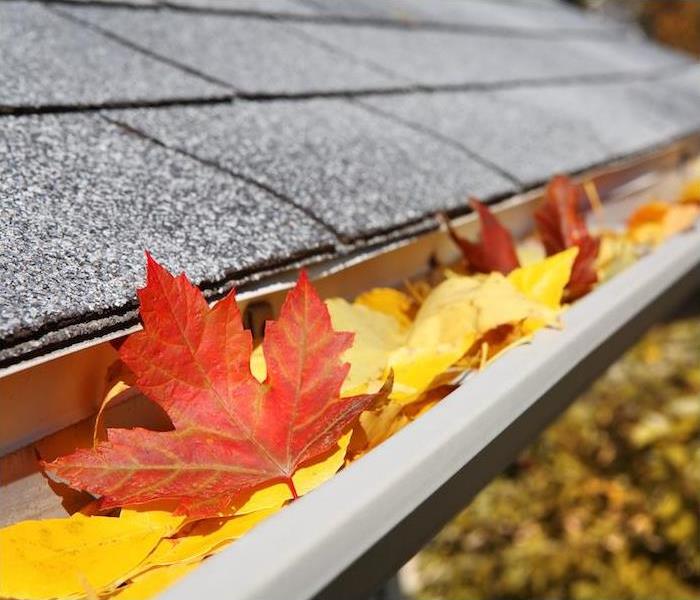 Safeguarding your home from water damage is easy this Fall with these insights from SERVPRO of Reno Southwest!
Safeguarding your home from water damage is easy this Fall with these insights from SERVPRO of Reno Southwest!
As fall arrives in the Reno area, homeowners need to prepare for the changing weather to protect their homes from potential water damage. The cooler temperatures and increased rainfall can bring about various challenges. SERVPRO of Reno Southwest offers key tips to help you safeguard your property and prevent water-related issues this fall.
Keep Gutters and Downspouts ClearWith the fall season comes falling leaves and debris that can easily clog your gutters and downspouts. Blockages in these systems can lead to improper drainage and water overflow, which may damage your roof, siding, and foundation.
To avoid these problems, ensure you inspect and clean your gutters and downspouts before the majority of leaves have fallen. Keeping these drainage systems clear will help direct water away from your home’s foundation, preventing potential water damage and ensuring your home remains protected.
Assess and Repair Your Roof and SidingThe fall weather can be tough on your home’s exterior, making it essential to check for any signs of damage to your roof and siding. Heavy rain and gusty winds can exacerbate existing issues, so it’s important to inspect your roof for missing or damaged shingles and examine your siding for cracks or gaps.
Addressing these issues promptly can prevent water from penetrating your home and causing further damage. By taking care of repairs early, you can maintain the integrity of your home and avoid more extensive repairs down the road.
Prepare for Freezing Temperatures and Protect PipesAs temperatures drop, the risk of frozen pipes increases significantly, which can lead to severe water damage. To protect your plumbing system, insulate pipes in unheated areas such as basements and crawl spaces. Keep garage doors closed, particularly if water supply lines are present, and during extreme cold snaps, allow faucets to drip slightly to keep water flowing and minimize the risk of freezing. Monitoring weather forecasts and taking these preventive measures will help safeguard your home from potential damage caused by frozen pipes.
By following these steps, you can reduce the risk of water damage and keep your home in top condition throughout the fall season. SERVPRO of Reno Southwest is here to assist with any water damage prevention or recovery needs you may have. If you need professional help or have concerns about potential water damage, don’t hesitate to reach out.
Our experienced team is ready to ensure your home remains safe and dry this fall. Contact SERVPRO of Reno Southwest today to find out how we can help protect your property.
Dealing With a Smelly Situation After a Water Leak | SERVPRO of Reno Southwest
5/1/2024 (Permalink)
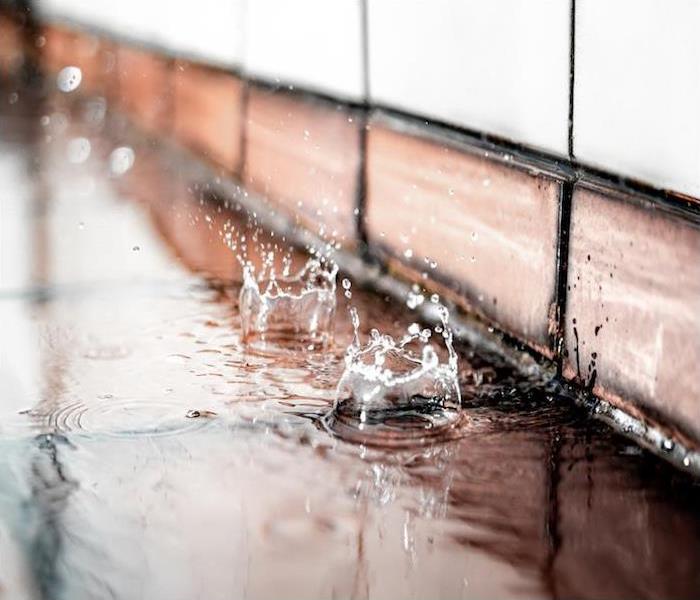 Trust our team at SERVPRO of Reno Southwest to provide comprehensive services for a full recovery for all your water damage restoration needs.
Trust our team at SERVPRO of Reno Southwest to provide comprehensive services for a full recovery for all your water damage restoration needs.
You discovered a water leak when you came home from work. Your dishwasher malfunctioned while you were gone and water is now all over your floor, or you left a window open and rain came pouring in, leaving your wall soaking wet.
You might think that grabbing a mop and a bucket or some towels will be enough to help take care of the problem, but unfortunately that is not always the case. If the water has been left to leak throughout your house for any period of time, you could be dealing with a much bigger problem than just a simple puddle.
Dealing with water disasters quickly by hiring a professional to help is crucial if you want to avoid serious issues like mold growth, rot and stinky odors like mildew.
Addressing Water LeaksOnce water gets where it shouldn’t be in your home, it can wreak havoc all over your walls, floors and ceiling. It will leak and seep into the tiniest of cracks and crevices, which can quickly lead to water ending up in really hard-to-reach areas.
If you come upon a water leak at home, of course your first instinct will be to grab towels to start drying up the mess. While that might take care of most of the visible water, you won’t be able to access the lingering moisture behind your drywall or under your floorboards. Unfortunately, this kind of moisture doesn’t simply evaporate like you might think it will. Without access to proper air movement, it can linger, causing further damage just out of sight.
Over time, it can start to degrade your home’s internal structures, cause any metal support systems to start rusting and mold can even set in. It only takes 24–48 hours for a few mold spores to grow into an entire colony, which means you could be dealing with a dangerous mold outbreak on top of frustrating water damage.
Following Your NoseOne of the classic signs of mildew and mold is the smell that they give off. If you notice a musty or an earthy odor a few days after cleaning up an unsuspecting water leak, it may be time to follow your nose to track down the source. However, that can be difficult to do if you think there is something sinister growing behind your walls!
That’s where we come in. Our water damage restoration team is highly trained on reversing water damage, but we can also address issues that were caused by the lingering moisture as well. In addition to repairing warped walls and addressing swollen floorboards, we will also track down any mold infestations or musty smells left over in the aftermath of the water disaster.
Our odor removal specialists will secure the area by turning off vents and your HVAC system and then we will filter the air to remove those stubborn odor particles. We will also clean and sanitize the surface to remove anything left behind. When it comes to water damage and the stinky odors it can leave behind, our restoration team has you covered.
Don’t ignore signs of a water leak. Contact SERVPRO® for a full recovery.
Recovering From Home Damage | SERVPRO of Reno Southwest
2/1/2024 (Permalink)
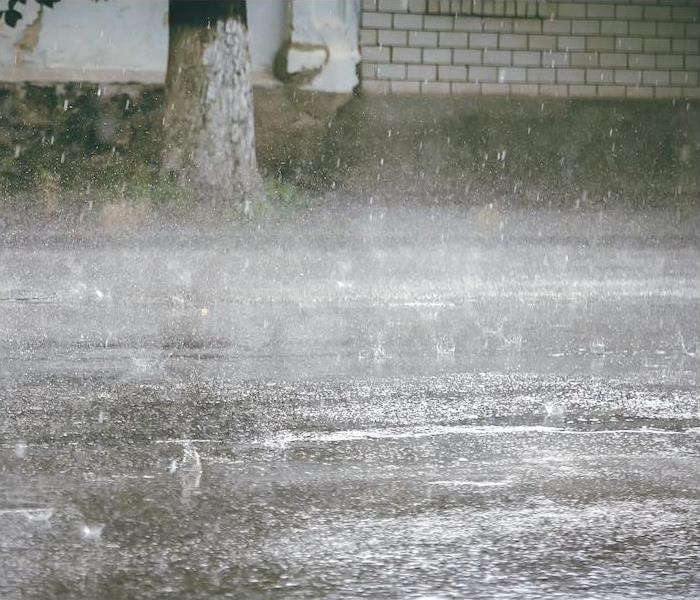 SERVPRO of Reno Southwest is Here to Help® when any disaster strikes!
SERVPRO of Reno Southwest is Here to Help® when any disaster strikes!
Home disasters can happen in the blink of an eye, and they can often become larger than we anticipated. This is especially true when Mother Nature is involved.
Whether a storm comes to town and brings heavy rain and flooding or something as simple as a leaky dishwasher causes water to rain down from your ceiling, recovering from the damage should always be your top priority.
The team at SERVPRO of Reno Southwest is here for you no matter what happens at your home! We are equipped with the right tools and training to handle your job from start to finish.
Disasters in the Reno AreaWe all know that disaster situations are often unexpected, and the toll that they can take can be seriously impactful in your daily life. Even if we are expecting a storm or a situation to develop, it can still take us all by surprise from time to time.
For example, heavy rain can have us all hunkered down in our homes, but it can quickly infiltrate your home and lead to structural damage and even mold growth over time. A fire can break out in your kitchen, only to lead to soot and smoke damage on other levels of your home.
Disasters can lead to a “when it rains, it pours” type of mentality, and your situation can sometimes get worse the longer the damage is left to sit.
We are on a mission to help make sure the impact is lessened and you are able to recover faster. Call us right away so we can get started on your recovery.
A Single Team for All RestorationsMinutes matter when it comes to disaster recovery, which is why we are available 24⁄7 to respond to your call for help. We are here for you no matter what time it is or what day it happens to be. We will use our expertise and resources to help you overcome your particular situation.
Our highly trained certified experts are confident in many different recovery methods, and we will make sure to tackle every aspect of your fire, water or storm disaster as quickly as possible. We are locally owned and operated, which allows us to be at your home even faster! We have worked on many different homes and businesses in our community, and we are highly qualified to handle your disaster situation, too.
We will get right to work securing your roof after a damaging storm or containing the area after you suffer a serious house fire. No matter what kind of disaster happened, we have the tools and training to take care of you.
We can even rebuild entire sections of your home if they have been damaged beyond repair. We will work hard to get your home back to normal as quickly as possible.
Another benefit of working with SERVPRO® is that you only will be working with us along the way! There is no need to juggle multiple different contacts or agreements because we are a one-stop-shop for your entire restoration.
Our highly trained staff, industry-leading equipment and 24⁄7 availability make us the best and most reliable choice when it comes to your restoration needs. Call us right away and we can guarantee sunnier days are right around the corner.
Have you experienced a disaster and need restorations? Make one call to our office to start recovery fast.
Tracking Down the Beginning of a Water Leak | SERVPRO of Reno Southwest
1/2/2024 (Permalink)
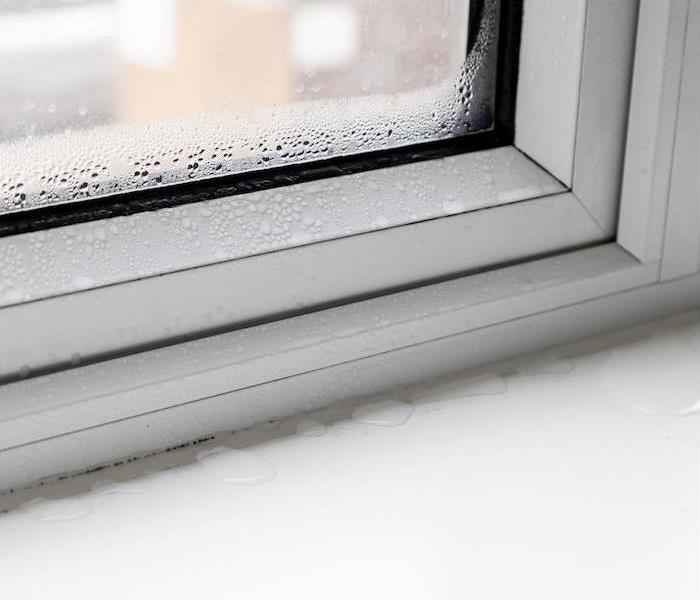 Water damage can happen anywhere in your home. Call SERVPRO of Reno Southwest to restore water damage on your property 24/7, 365.
Water damage can happen anywhere in your home. Call SERVPRO of Reno Southwest to restore water damage on your property 24/7, 365.
We rely on water each and every day to help us accomplish tasks in our households and we assume that it will always be there for us when we need it. However, since we have such a close relationship with water inside our homes, that also means that the risk of suffering from a serious water disaster is also constant.
While many kinds of water leaks can’t be prevented, knowing where they often start can help you stay in control and stop a problem before it gets worse.
Under Any of Your SinksEach faucet in your home or even the water lines underneath your kitchen sink that lead from your dishwasher have the potential to leak at any time. These water lines are constantly bringing water to and from your home, which means that even the smallest crack or gap along the line can pose serious water troubles.
Once a leak starts under your sink, it will quickly seep into your cupboards, into your walls and leak down beneath your floorboards. Checking these spaces every time you are in a particular room cleaning can help identify any potential issues that are emerging. If you notice a loose connection or a seal that is starting to wear away, you can address preventive repairs to help your home stay dry.
Under Any Water-Reliant ApplianceHow many appliances do you have in your home that rely on water to function? Chances are, these are the ones that you use most often in your home! Dishwashers, water heaters, washing machines and even your fridge with a built-in ice maker can leak or malfunction at any point.
Since many appliance leaks start beneath or behind the machine, it can be really hard to identify these types of leaks as they are beginning. Run your hand along the edges of your machine to check for moisture whenever you go to use it, and get in the habit of pulling them away from the way regularly to check for water spots, puddles or mold growth.
Under Your Floors or Behind DrywallWe all have water lines that are constantly flowing water in and out of our homes, and these lines are often found behind our walls and under our floors. If a water leak starts in one of these places, it could quickly become a problem! However, since the leak is not easily seen, it can cause a lot of damage before it becomes apparent.
If you start to notice a musty odor or there is a dark spot forming on your otherwise lightly colored wall, it’s time to investigate further.
Around Aging Windows or DoorsCondensation can be a natural occurrence as the temperature rises and falls drastically throughout the seasons. However, if that condensation isn’t dried off quickly, it can seep down your windows and warp your windowsills or get behind your window casings.
Moisture can also easily infiltrate your home through any small gaps or cracks in your seals. If you notice that a part of your wall is always wet after it rains, you may need to think about re-caulking your windows.
If you do end up suffering water damage, do not worry! Simply call SERVPRO of Reno Southwest for a quick restoration. Our team has the tools to help dry out your home and address repairs right away so you can avoid further structural concerns and potential mold infestations.
Don’t ignore signs of water damage! Call SERVPRO® for a quick restoration.
Tips for a Quick Recovery After a Water Disaster at Work | SERVPRO of Reno Southwest
12/1/2023 (Permalink)
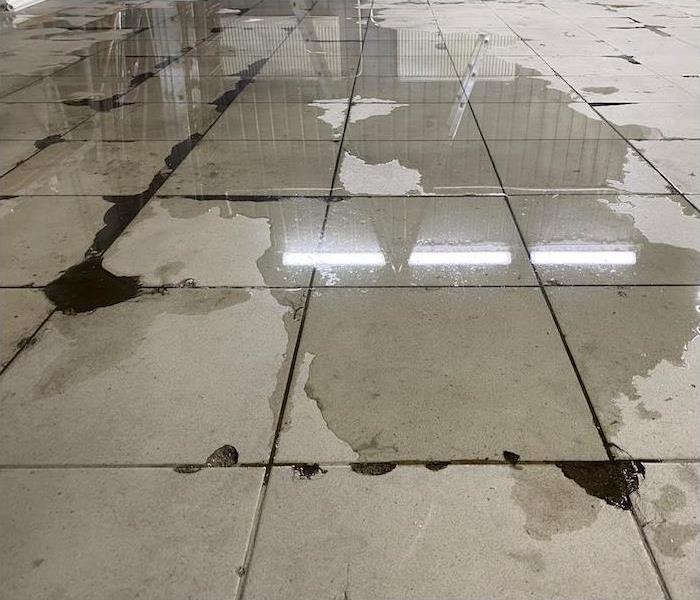 Has water damage infiltrated your business? Give SERVPRO of Reno Southwest a call to get that resolved!
Has water damage infiltrated your business? Give SERVPRO of Reno Southwest a call to get that resolved!
Running a business can be so rewarding, but it can be a lot of work! Planning for daily tasks, organizing employees and making plans for the future can keep you busy. So when you discover a potential disaster situation, like a water leak, it can be really overwhelming!
No one expects to walk into work one day and be hit with the musty odor of stagnant water or step right into ankle-deep water, but it must be dealt with right away.
No matter how a water disaster occurs, jumping into action can help reduce the extent of the damage and prevent troublesome issues like mold growth. Check out our tips below on how to handle water disasters when they occur in the workplace.
Addressing the Issue FirstFloods can occur due to manmade disasters or from the wrath of Mother Nature, but each scenario can be really frustrating to deal with. Try to stay calm and follow a few easy steps in order to get started on your recovery right away and prevent further damage.
1. Stay safe. Safety is key in any situation, but especially when the situation involves your employees and customers! Keep them out of the area, and prevent anyone from walking through the water. Call us right away and then start taking some photos of the damage you see. These images will be really helpful for your insurance company as well as our team while we get started on your recovery plan.
2. Control the disaster. Time is of the essence when it comes to water damage, so acting quickly is necessary to prevent major losses. Do your best to find the source of the leak and shut off the flow of water. This will probably include locating the appropriate water valve and turning it off, but if you can’t find it, turn off the main waterline for the time being.
3. Start the drying process. Floodwater can contain dangerous chemicals, storm runoff and even sewage, so do your best to stay out of the water while you open up some windows and get a fan running to start the drying process.
Getting Started on Your RestorationWe will arrive quickly, and we will immediately get started on your water removal. We will remove the excess water as well as the hidden moisture that you can’t see behind your walls. Once things are dry, we will turn our attention to your restoration plan and assess what repairs need to take place.
We will also work directly with your insurance company during this time so you can focus your efforts on keeping your staff calm and in control. Some situations allow businesses to operate in a reduced or adjusted capacity while we work, so we will do our best to help you move forward however we can.
Once we are finished with our restoration, you can open back up fully and enjoy a completely restored space! We know that it can be really frustrating to experience a setback at work, so we work hard to restore your home as quickly and as efficiently as possible.
Do you need repairs after a water disaster in your commercial building? Contact us to get dried out quickly.
Protecting Your Home When the Rain Comes | SERVPRO of Reno Southwest
9/18/2023 (Permalink)
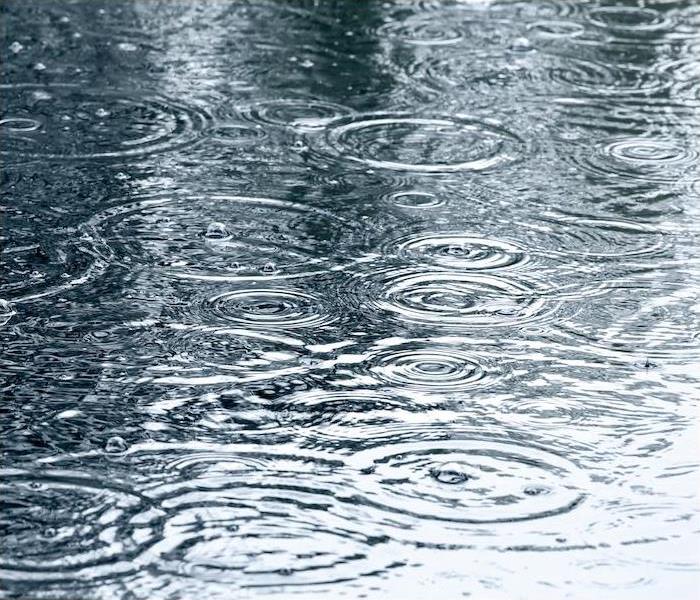 Water damage in your home? Not for long with SERVPRO of Reno Southwest on the case!
Water damage in your home? Not for long with SERVPRO of Reno Southwest on the case!
The heat and humidity of the summer is finally beginning to fade a bit and the fall season is right around the corner, but that doesn’t mean we are out of the woods when it comes to severe weather. While a soft and gentle rainstorm can help refresh our community, strong storms can create all kinds of chaos around town.
Severe weather can bring strong wind, hail and intense rain that falls in sheets or heavy waves that soak our landscape. If the rain falls hard enough, it can also soak our homes! Having rain inside your home is never ideal, but sometimes it cannot be prevented.
Our SERVPRO® of Reno Southwest team explains some simple steps below to follow to stay dry and safe when the next intense rain or flash flood is forecasted, so read on to learn more.
The Dangers of Rain in Our CommunityRain can be especially hazardous at this time of year if we have been experiencing drought or dry conditions. Our arid climate can make the ground hard and brittle, and if the rain falls fast enough, the ground can’t absorb it all and flash flood conditions or even landslides can occur. Rain can overwhelm drainage areas and low-lying properties in minutes in the Reno area.
While we cannot stop rain from falling from the sky, we can be prepared for it when it does! Preparing in advance can help you stay safe, so stay connected to our local weather stations and take action as soon as rain is forecasted.
Steps to Follow During Flood WarningsGetting your home ready and ensuring your family’s safety should always be your goal during these types of situations. Head for home if you are out and about, avoiding any roads that often flood and any drainage areas. Pull your car into the garage and start tidying up your yard. Tie down any heavy objects like trampolines or propane tanks, and consider moving anything inside your home or garage that you don’t want swept away in the storm.
Get anything fragile or sentimental out of the lowest level of your home and move it to a safe location higher up, and turn off electricity down there if you know your basement often floods during storms. After that, just stay put and keep an eye on the forecast. Don’t panic if the water starts rushing in! Stay above the waterline and call us as soon as the storm is over for a full restoration.
Additional Prevention StrategiesOnce the storm is gone and you have tackled any cleanup or restoration needs, it’s time to think about ways to prevent this from happening again. One reliable way to keep your property dry is to professionally grade your yard. Angling your yard away from your house can help rain move naturally down and away instead of backward into your foundation.
Another easy way to stay dry is to invest in a sump pump. Sump pumps are a helpful investment because they automatically turn on when they sense excess water near your foundation and they pull it out and pump it back up to the surface where it drains away.
We know that flood situations and water damage can be overwhelming, but we are always here to help! Our water damage restoration specialists will jump into action for you to dry up the excess moisture, repair whatever was ruined by the water and sanitize the area to prevent mold growth.
We are here for all of your water disasters. Contact us day or night for a quick recovery.
What to Do After Discovering a Water Leak | SERVPRO of Reno Southwest
8/10/2023 (Permalink)
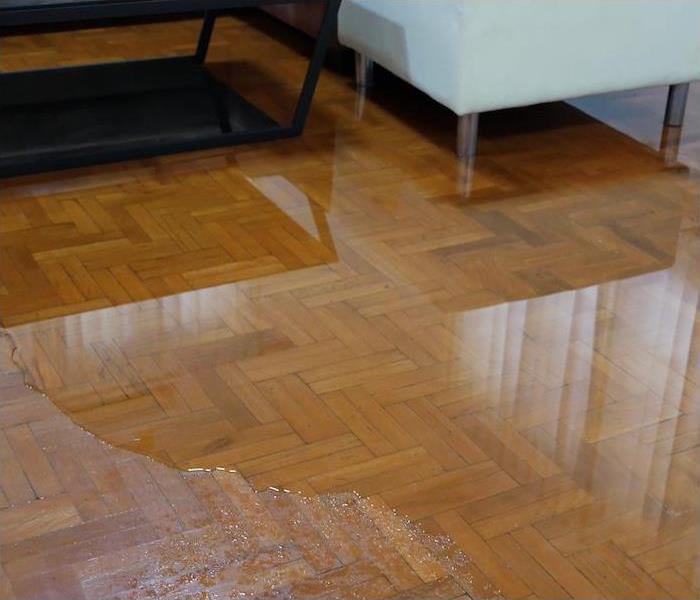 If you discover water damage in your home or business, call SERVPRO of Reno Southwest right away.
If you discover water damage in your home or business, call SERVPRO of Reno Southwest right away.
Water is everywhere all of the time, even if we don’t see it or think about it every day. It is evaporating in the air, flowing through storm drains and running out of our pipes and faucets to help us get through our days.
While we are incredibly grateful to have such easy access to water when we need it, it also has the potential to cause significant troubles if it winds up where it shouldn’t be. A flooded basement due to a broken pipe or a roof leak during a rainstorm can cause significant issues for you. While it may not rain very often, it is really windy in the Reno area. This wind can cause damage to your roof over time, and when it does rain, it can cause water spots or soggy walls quickly.
Avoiding water damage altogether is always the best case scenario, but that’s not always possible. Thankfully, SERVPRO® of Reno Southwest is here to help you recover and dry out your space quickly.
Your Initial ReactionDiscovering water at your home is incredibly frustrating, but you have to act fast if you want to control the outcome. Water will sneak into every crack and crevice of your home if you wait long enough, so jumping into action can help stop the problem before it gets worse.
Locate the source of the leak and shut off the flow of water by closing the appropriate water valve. You should also turn off the electricity to the area for the time being. If the leak is happening during a storm, you may just have to wait it out before going outside to investigate. Set out a bucket or do what you can to collect the water in the meantime.
Remember that you should never try to walk through standing water in your house because there could be live electrical wires or other hazards beneath the surface.
Once it is safe to do so, grab your phone and call SERVPRO®. We are here to respond to your disaster 24⁄7 and we will start planning out your restoration as soon as you call us.
Drying and RestoringOur first phone call involves a lot of questions as we start forming our recovery plan for you. We will also ask you to take some photos of any damage you see. We can work with your insurance company to process your claim, and those images can make it easier for everyone involved.
We get to work as soon as we arrive at your home. We will focus our efforts on getting the water out with industry-leading drying equipment while also removing soft materials and other fragile possessions. We always want to restore rather than replace, so we will work hard to dry everything out carefully.
Once the water is gone, we can clean, sanitize and deodorize your space before working on the repairs. Our team is trained to handle the entire restoration process and that includes restoring anything that the water damaged. We can repair soggy drywall, soaked carpet and even warped floorboards.
Discovering water damage can feel overwhelming at the moment, but having SERVPRO of Reno Southwest on your team can make the entire process easier and more manageable! Let our team help you overcome your next disaster situation.
Do you have water damage in your home? Call us for fast and complete restoration.
Water Damage May Be Lurking in Your Home | SERVPRO® of Reno Southwest
5/9/2023 (Permalink)
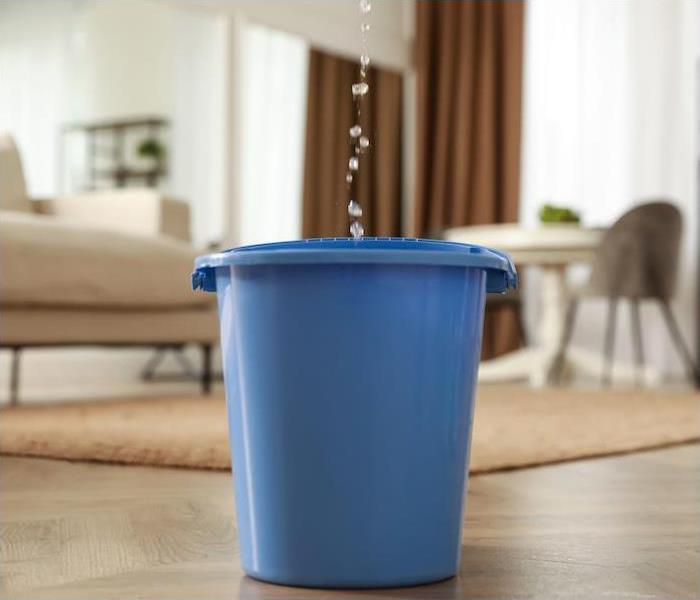 Think you may have water damage in your home? Here are some tips from SERVPRO of Reno Southwest to find the source.
Think you may have water damage in your home? Here are some tips from SERVPRO of Reno Southwest to find the source.
Coming home to standing water or discovering a water leak in your home is such a frustrating experience as a homeowner. Even if you do your best to prevent water leaks, accidents and appliance malfunctions can happen at any time.
In order to best protect your home from widespread water damage, it is important to understand where water leaks are most common so that you can prioritize checking these spaces around your house.
The faster you discover a water leak, the better chance you have of avoiding costly damages. Our SERVPRO of Reno Southwest team explains more about common water leak locations below, so read on to learn more.
Your roof. Roof damage can occur with general wear and tear over time, or it can happen in a singular event during a strong storm. However it happens, it can go unnoticed for a long period of time.
Once the damage has been done, a classic Reno thunderstorm can cause water to leak down into your attic and spread throughout your home. It can seep into ceilings, walls and floors without many signs.
If that happens, your home is now vulnerable to mildew and mold growth. This is because water leaks that happen behind your walls are hard to dry out, which creates a perfect environment for mold to grow.
In your bathroom. The bathrooms around your home also have the potential to experience leaks. With all of the fixtures inside, it’s no surprise that any of them could leak at any time. It can also be hard to distinguish between a water leak and just a puddle of water on the floor after a busy morning.
This is why you need to investigate any unexplained water quickly in your bathroom. A leaking water line or worn pipe connector could be the beginnings of a large-scale water problem, so discovering these issues quickly is vital.
You should also prioritize ventilating and drying out your bathroom between uses as well. A humid bathroom with lingering moisture is never a good combination.
Other appliances. Many homeowners experience an appliance malfunction or two in their lifetimes. That’s just part of owning a home! However, that doesn’t make it any easier when you come home to a flooded utility room or kitchen floor. If you have a dishwasher, washing machine or water heater in your home, check on them often for signs of moisture or leaks.
This might include pulling them away from the wall to check behind and beneath them. Appliances can often leak where it isn’t noticeable right away, so do your due diligence when investigating.
One of the most reliable ways to avoid water damage is to replace your old appliances with newer equipment. Swapping out your worn-out appliances can ensure your home is equipped with the most reliable technology.
Dealing with a water emergency? Our SERVPRO specialists can be on the scene of the disaster ASAP to restore your water-damaged home!
Water: A Destructive Force | SERVPRO® of Reno Southwest
4/19/2022 (Permalink)
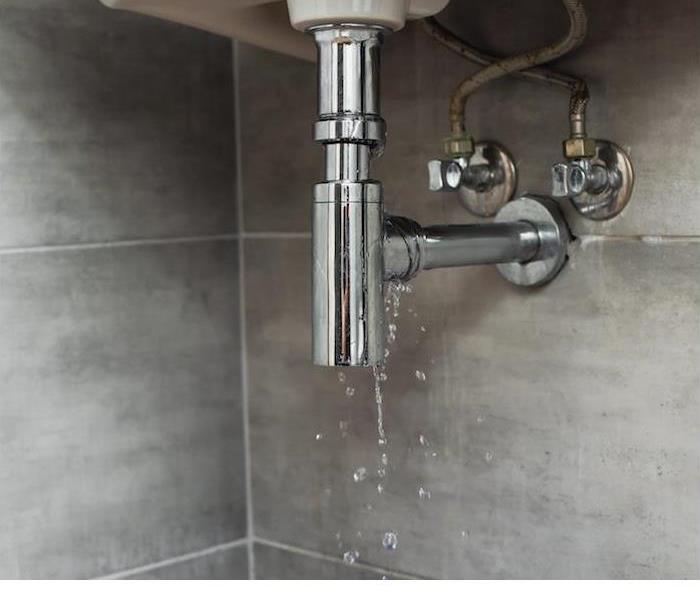 No matter the damage sustained, SERVPRO of Reno Southwest has the tools and team to help your home return to a normal state quickly.
No matter the damage sustained, SERVPRO of Reno Southwest has the tools and team to help your home return to a normal state quickly.
Nothing can prepare you for everything that comes along with home ownership. There will likely be a day when you notice a small defect in your home and don’t think much of it.
For example, a leaky faucet may not seem like a big deal. However, the average household leak can waste up to 10,000 gallons of water in a year, and you never know how much of the water ended up in your home.
Water damage progresses rapidly, seeping into floors, walls and soft surfaces. It’s crucial to address the issue right away to produce the best results.
Here’s what you need to know about the timeline of water damage:
<h2the-first-24-hours">In the First 24 Hours
Your Reno home could have up to a one in four chance of a flood damaging it within a 30-year period if it’s in a high-risk area. This is why you need to know what to do next.
The first 24 to 48 hours after flooding or water damage are crucial. Certain items will immediately fall victim to water’s disastrous effects. These could include items like books or photographs, which are easily warped. Soft furnishings and upholstery will soak through, and wooden structures can swell from the moisture.
When you call up SERVPRO, we will operate with a “restore vs. replace” mindset to help you save money while preserving precious keepsakes that can’t be replaced. If any materials cannot be successfully restored, we will let you know. These materials are typically removed as soon as possible to expedite the drying of all restorable materials.
<h2the-first-week">Within the First Week
After the first 24 hours, water damage will progress further and quickly. Mold can spread like wildfire with excessive moisture. As mold sets in, it can even damage the home’s structure.
Additionally, porous surfaces, such as wood surfaces and walls, will become increasingly compromised, and metal surfaces will start corroding.
<h2one-week">After One Week
You want to avoid letting moisture sit for an extended period at all costs because some effects may be catastrophic or irreversible. As time goes on, the costs and efforts to restore the structure will increase significantly, and the risks associated with structural damage are greater.
<h2SERVPRO-will-help">How SERVPRO Will Help
Our experts will go ahead and start the restoration process after the first call, preferably within the first 24 hours. We start the process by thoroughly extracting the water. This helps prevent the spread of water in the structure and reduces drying time.
After that, we’ll use specialized tools to remove any remaining moisture present.
Most likely, floors, furniture and other belongings will require cleaning, sanitizing and deodorization.
After these initial steps, your home may still need repairs to get your home back to the way it was before disaster struck. We can take care of anything from minor repairs to rebuilding large sections of your home.
Let us simplify the restoration process by handling both the initial damage mitigation and rebuilding of the affected areas. We will keep you updated throughout the process and get you back to “Like it never even happened” status quickly.
Regardless of the type of water damage sustained, SERVPRO has the tools and teams to help your home or business recover. Contact us 24⁄7 when you need a dependable team to help you recover.
Here’s How SERVPRO Handles Water Damage in Reno | SERVPRO® of Reno Southwest
1/5/2022 (Permalink)
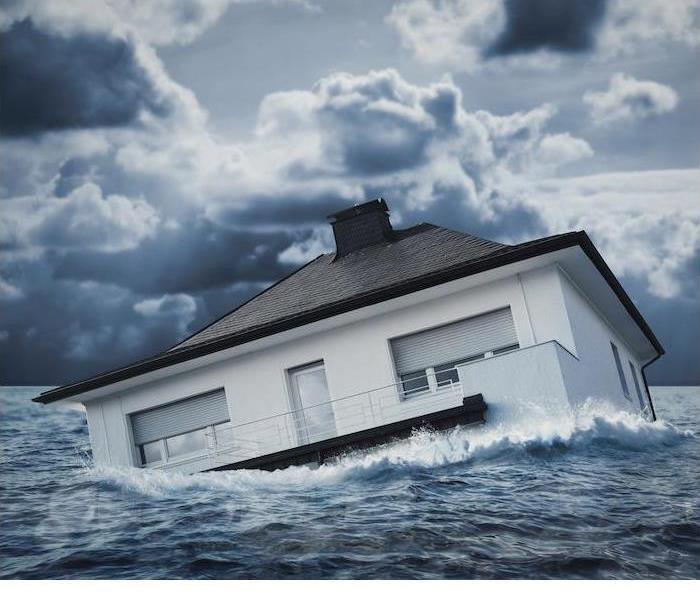 When water damage strikes, make the call to SERVPRO of Reno Southwest for A-to-Z cleanup and restoration.
When water damage strikes, make the call to SERVPRO of Reno Southwest for A-to-Z cleanup and restoration.
Water damage is different from other disasters in that it’s doubly unpredictable. For example, with natural disasters, you have to deal with the unpredictability of outside forces alone.
But with water damage, you never know when a flood could occur, and you don’t know when a pipe might open up inside your wall or a water heater might burst. Two sets of variables can double the frustration.
If you are on of the 14,000 unfortunate homeowners who will deal with a water damage issue today, take a deep breath and click that help link at the bottom. Here’s how SERVPRO can handle your water emergency.
Emergency Contact. Rest easy; you’ve already got an expert on the line. Just answer a few questions to help us understand what’s going on, and we’ll set a time to get on site.
Inspection and Water Damage Assessment. Next step is getting boots on your property and eyes on the damage. We’ll get a feel and put a plan together, and we’ll make you aware of any potential perils stemming from the damage.
Water Removal. Your SERVPRO team brings knowledge to the table and pumps to the scene, and we’ll use them both to get rid of the offensive water that’s got your life upside down. You’ll lose count of how many gallons we’re able to extract.
Damaged Material Removal. Restoration is our priority, but some things may not be able to be saved. We’ll carry those things off and leave the rest of the space in a better situation to get dry.
Cleaning, Sanitizing and Deodorization. Water that invades your home can stain, sour and flat-out stink. We’ve got customized cleaners and techniques to get rid of all of it.
Drying. Our next big priority is getting the place dried out before mold sets up shop. We’ll use highly powerful HEPA vacuums and other equipment to strip every surface of excess dampness.
Monitoring. What we start, we’ll manage. Every day you’ll be seeing and hearing from us on the status of the restoration, and if adjustments need to be made we’ll be right there on top of things.
Repairs and Construction. Now for our last trick, we’ll make your home look Like It Never Even Happened. We’ll go to whatever lengths necessary to repair, restore or reconstruct your damaged areas, so that when we’re finished, you’ll barely even remember we came.
When water damage strikes, make the call to SERVPRO for A-to-Z cleanup and restoration. We’ll make your damaged property look “Like It Never Even Happened.”
The Price of Water Damage | SERVPRO® of Reno Southwest
12/20/2021 (Permalink)
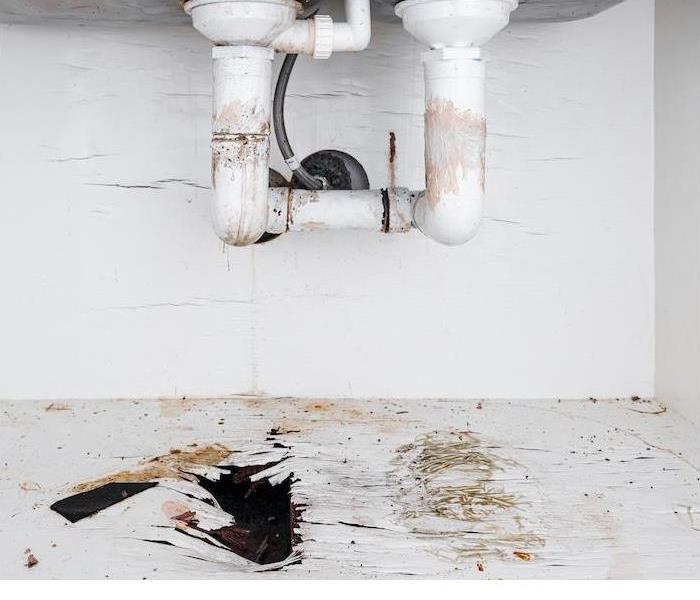 If water damage catches you off-guard and leaves you all wet, you’ve got help on your side. Contact SERVPRO of Reno Southwest.
If water damage catches you off-guard and leaves you all wet, you’ve got help on your side. Contact SERVPRO of Reno Southwest.
When you’re a homeowner, you do everything you possibly can to help protect your home from any disaster.
No one wants to deal with water damage, so we do all we can to help prevent this from happening to our home.
You can do your part to help ensure that your pipes and appliances are well-equipped and maintained. This doesn’t promise that water damage won’t hit you, but it can help ease your mind, knowing that you’ve done all you can to help protect your home.
Here’s a look at water damage by the numbers:
24. This is the percentage of all home insurance claims that pertain to water damage. That’s one out of every 50 homeowners filing a claim in a given year.
48. Water damage can cause mold damage within 48 hours of water entering your home. And dependent on the weather and other circumstances, it doesn’t always take 48 hours before mold will set in.
98. Owning a home with a basement can be pretty cool at times. But when it comes to water damage, a home with a basement has a 98% chance of having water damage at some point.
10,234. The average insurance claim for a water damage issue is $10,234. It may seem like a lot, but not when you consider that water not only damages your possessions but can also do major structural damage to your home.
14,000. Water damage happens so much that you might be shocked at what this number really represents. The number represents the number of Americans who have some kind of water damage every single day!
13,000,000,000. This number alone is shocking, but when it represents the amount of money used to “fix” water damage, it’s even more shocking. In the United States alone, $13 billion is shelled out every year.
While these numbers are astounding and can be overwhelming, the good news is that most water damage is preventable. Maintain everything in your home you can to help stay on the positive side and win against the odds of water damage.
If water damage catches you off-guard and leaves you all wet, you’ve got help on your side. Contact SERVPRO to see how we can quickly and fully restore water damage to your home or business.
Water Where It Shouldn’t Be? Check These Common Culprits | SERVPRO® of Reno Southwest
9/7/2021 (Permalink)
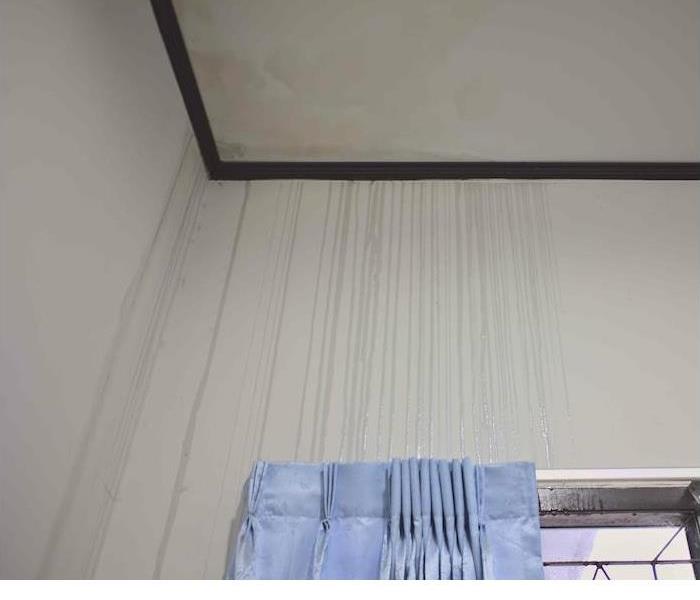 A water leak can turn into a big problem. Contact the SERVPRO of Reno Southwest team if you are dealing with any water damage.
A water leak can turn into a big problem. Contact the SERVPRO of Reno Southwest team if you are dealing with any water damage.
Dealing with water damage can be a stressful situation. Water in your home makes life easier, except when it goes outside of the areas in which it is designed to be contained. Water is always looking for somewhere to go, and it always seeks the path of least resistance.
Having knowledge of home systems that are designed to contain water can help you determine where a leak is coming from. Let’s look at a few common sources of water damage to keep your eye on:
Toilet seal. The toilet has two seals. One is a flapper that contains water in the tank, and the other is a wax seal that is located at the bottom of the commode where it meets the drain. Both of these seals have the ability to fail over time.
Refrigerator. Refrigerators with automated ice makers will have a supply line, which is a small plastic tube that takes water from the supply line and feeds the ice maker. All of those connections have the ability to leak. Refrigerators also have an evaporator coil that is used to help defrosting ice dissipate. If the coil doesn’t evaporate all of the water, there is a drip pan to catch it. From there, most of the time it evaporates. In certain instances, the drip pan may fill and need to be emptied. If that happens, have a professional check the condensing coil to ensure it is in proper working order.
Clogged gutters. It’s considered a good practice to routinely clean the gutters on your home. Debris can fill the gutters and prevent water from going into the downspouts and away from the house.
Roof damage. Storm damage to roofs can come in many different varieties. Tree limbs can break off trees and penetrate the roof, shingles can be torn or removed by high winds and hail damage can damage shingles. These are all things that can damage your roof. It’s best to inspect your roof after each storm to ensure it hasn’t been compromised.
Field line obstruction. There could be many causes for this, but the primary issue is root intrusion. Grease and other obstructions usually happen in the septic tank, unless you connect directly into a sewer system. In that instance, grease can also clog a sewer line.
Sump pump drain. If you have a sump pump, a device to move water from a low point in your basement or crawlspace out into a drain system, make sure the pump is in good working order and free of obstructions.
All of the items mentioned above are opportunities for water to intrude where it’s not meant to go. Knowledge of these systems will help you mitigate the risk. It’s better to be prepared than to have to deal with a water disaster!
If a water leak erupts into a big problem at home, you’ve got the best team in the business on your side. Contact SERVPRO today so we can get started.
These Simple Projects Can Help Stop Rain Damage | SERVPRO® of Reno Southwest
4/5/2021 (Permalink)
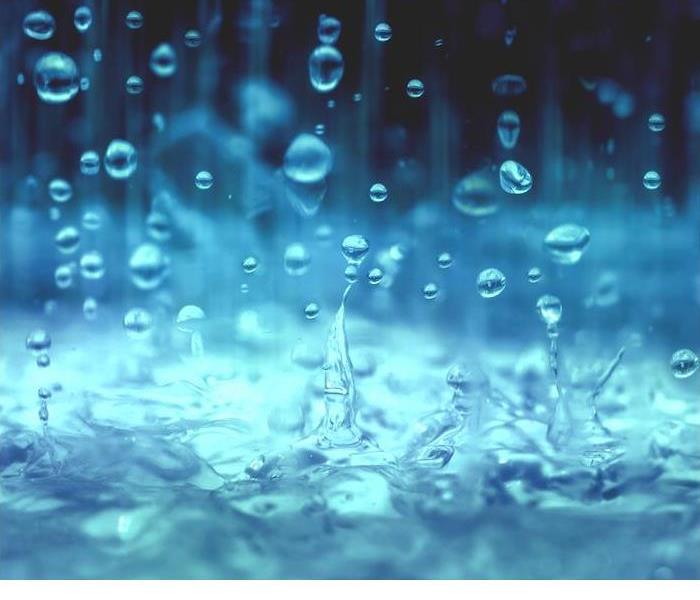 If you need help dealing with any damage caused by water, contact SERVPRO of Reno Southwest today.
If you need help dealing with any damage caused by water, contact SERVPRO of Reno Southwest today.
If you had to guess, how likely would you say it is that you’ll have to deal with water damage to your home this year?
The answer is probably more likely than you think. After all, one in about every 50 homeowners will file a water damage claim in 2021. So, mathematically, that means millions of American families will need to have their homes repaired.
Depending on your social circle’s size, it might mean more than one person you know will need water damage repair work!
How Water Damage Happens
If asked how water damage can happen, homeowners are clear on many of the common causes. They include flash floods, tornadoes and other violent storms or in-home accidents involving plumbing, washing machines or a dishwasher.
Most homeowners are aware of these risks and look for ways to prevent these things from happening.
But you may want to think about the damage that can be caused by heavy rains, too. This is especially true if you’ve deferred any home maintenance issues.
Stop This Homeowner Headache
These guidelines can help you move forward with home maintenance.
Think about sealing your roof. Experts estimate that almost 95% of damage is caused by water finding its way through gaps in your shingles, which can be prevented with this step. It’s definitely worth considering.
Shop for native plants when it’s time to landscape. If you do a little homework, the flowers and shrubs you use to help you landscape your home and add curb appeal can also become an added layer of protection. Native plants can help. Talk to a local expert about native plants or visit a native plant sale.
Examine the way your yard drains. Knowing how your yard drains is key to protecting your home. If the water in your yard drains toward your home, then you may want to connect with a landscaping expert. They can help you find ways to protect your yard.
If you need help dealing with damage caused by water, fire or any other issue, we’re here to help you restore your home. We have crews who are available 24⁄7 in the event of an emergency. Contact us at any time to learn more about us and how we can help you restore your home to its original state.
Do you have any water damage to your walls or ceiling? Contact SERVPRO of Reno Southwest, we will help guide you through the restoration process.
1/13/2021 (Permalink)
Quick quiz to test your homeowners insurance knowledge: Do you think more homeowners file water damage claims or fire damage claims every year?
If you guessed water damage claims, then you picked the right answer.
Fire damage claims have been falling steadily, but experts estimate that one in 50 American homeowners will file a water damage claim in 2021. That makes them one of the most common claims filed on homeowners insurance policies.
Help Managing Water Leaks and Damage
Sometimes leaks that are caught early can be cleaned up with a few towels. But in other cases, you may need professional help to prevent damage to your property.
Your first step toward restoration is knowing the signs of damage and what to do if you spot them.
Here’s what you might notice when you’re dealing with water damage that merits professional cleaning and remediation:
Your home has a distinctive, musty smell. Does your home have a musty odor? That can be among the first signs of mold damage, meaning if you notice that scent, it’s time to call in a professional to help you deal with remediation issues.
Your floorboards or furniture are warped. Wet wood will start to warp within just a few days. If that happens in your home, it’s best to start seeking help from professionals who can help you restore your home.
You notice your windows or walls are stained and damaged. Like your floors, your window panes and walls can start to warp if the water damage is severe enough. That means it’s vital if you notice these signs to get remediation help.
If you have water damage in your home due to a burst pipe or another cause, you can count on us for restoration assistance. We have teams who are available 24⁄7 in the event of an emergency. Contact us at any time to learn more about our restoration services.
Water Damage - What are some signs?
2/14/2020 (Permalink)
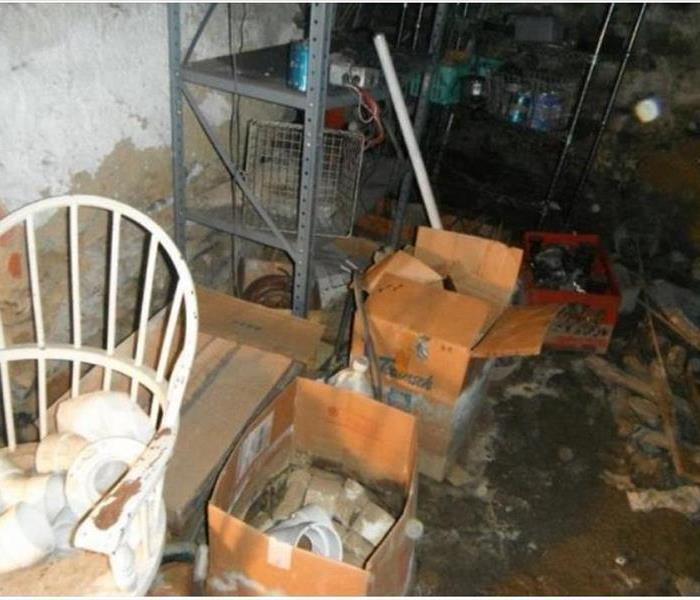 When water damage its your home it could be stressful and overwhelming. We at SERVPRO or Reno Southwest care about your property and belongings.
When water damage its your home it could be stressful and overwhelming. We at SERVPRO or Reno Southwest care about your property and belongings.
Water damage inside your home is very time-sensitive, the best way to mitigate damages is to find the water and source as soon as possible. Early signs of water damage can sometimes be overlooked. If you know what you are looking for, it will make it easier for you to spot the water damage you should be aware of in your home.
Visible stains and Discoloration
Ceilings, walls and floors may also show spots or stains in areas where water is present. Water spots cause discoloration in many different shades and shapes. These marks may appear darker and then fade. This is a common trait of water damage.
Strong Musty Odors
Pungent, earthy and musty smells are almost always a giveaway that there is mold growth. Mold growth happens when excess water or moisture is present. Often times mold growth and water damage are coupled. Mold can cause severe respiratory symptoms in those who are exposed to it. Whatever the source of water is, will need to be stopped prior to any remediation efforts for the mold damage.
If you are unsure if you have any water damage issues SERVPRO of Reno Southwest offers our community free inspections to verify that your building or home are safe from water damage. Call Today at 775-852-6480 – 24/7 – 365 Days a Year!!!
10 Steps - After a Water Damage
2/13/2020 (Permalink)
Water damage can be incredibly damaging and the effects can cause secondary damage very quickly. Below you will find 10 steps to take once a water intrusion has been found.
- Remain Calm – The calmer you are the more clearly you will be able to navigate the situation
- Close the water main / Shut off any water source so flooding STOPS
- If you can not stop the water yourself – CALL A PLUMBER
- Shut down the electrical breaker in the damaged area(s) – Do this PRIOR to unplugging any electrical devices from the wet carpet or submerged areas.
- Call SERVPRO of Reno Southwest at 775-852-6480 – 24/7 – 365 Days a Year
- Put a product such as aluminum foil under furniture legs to avoid staining on carpet
- Lift any curtains/ draperies away from water
- Lift and pin up furniture skirts made from upholstery
- Remove paper products such as: books, important documents, photos if damaged areas can affect them.
- Call your insurance company. Most insurance companies require the homeowner to report the damage “ as soon as reasonably possible “.
Water travels the path of least resistance but can and will go through building materials at very rapid speeds. By following these 10 steps you will be able to mitigate damages quickly and save yourself and your insurance company a lot of money.
Flood Damages to Homes | SERVPRO® of Reno Southwest
1/29/2020 (Permalink)
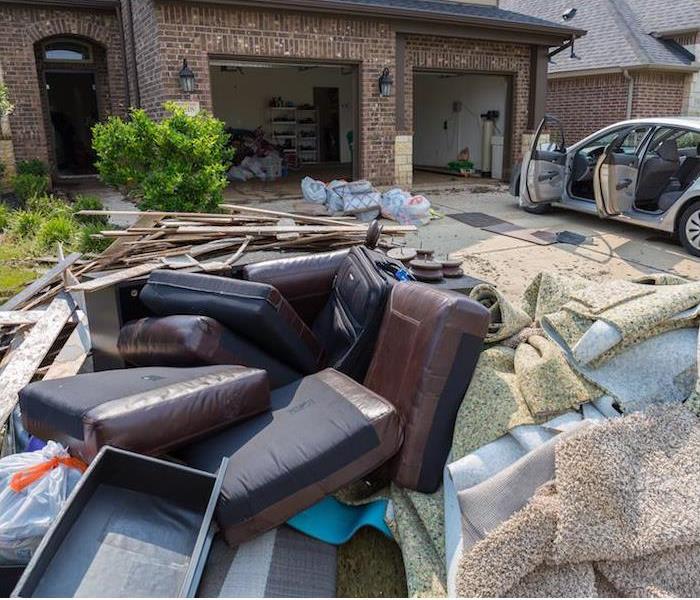 when the unexpected happens and water overcomes your home, its important to trust a company that is highly trained in this industry to help you.
when the unexpected happens and water overcomes your home, its important to trust a company that is highly trained in this industry to help you.
While floods were once considered a mostly isolated incident, their frequency continues to rise, making it a wise choice for homeowners to begin practicing preparedness.
Though being located in a floodplain can increase your chances of experiencing a flood, many incidents lead to flooding in many places. This also makes the damages they cause variable. However, by understanding the most common types of damage, homeowners can find themselves better prepared.
Types of Damages Floods Lead ToFoundational Damage. A house’s foundation is often damaged in a flood due to the soil underneath shifting and swelling after being saturated with floodwater. This can manifest itself in cracking, uneven flooring and off-kilter door and window frames.
Drywall Damage and Mold. Water-damaged drywall and mold go hand-in-hand, so a drywall replacement of any panels that have come into contact with floodwaters is typically in order.
Insulation Saturation. Most insulation can absorb water if the walls around it become soaked through, making it a prime spot for both water damage and mold growth. Some types of insulation are non-absorbent, so having a professional assess your damage is key.
Temporary Frame Swelling. A house’s structure is typically made up of solid lumber, meaning it will swell if it is soaked through. However, the good news is that once it is fully dried out, it will often return to its normal size and original structural integrity, not sustaining any lasting damage.
Appliance Ruining. Appliances are insulated to regulate their temperature, but this also makes them a culprit for water damage. Not every appliance is constructed this way, however, so getting a professional assessment can prevent you from needlessly finding replacements.
Furniture Damage. Mattresses and other upholstered items are exceptionally vulnerable to flood damage as well as mold growth, but wood and metal furniture can often be salvaged. Anything you intend to reuse should be thoroughly and professionally cleaned to prevent contamination, but once this is done, it will generally be safe.
If your home has been affected by a flood, we’ll be here to help you! Give us a call 24⁄7 to learn about our certified flood restoration process.
Actions for Business Flood Preparedness SERVPRO of Reno Southwest
1/27/2020 (Permalink)
 A flood can happen when you least expect it. If your business experiences any water damage, contact SERVPRO of Reno Southwest. We will get your back o
A flood can happen when you least expect it. If your business experiences any water damage, contact SERVPRO of Reno Southwest. We will get your back o
Actions for Business Flood Preparedness SERVPRO of Reno Southwest
It is important to not underestimate the usefulness of disaster planning when your own a business, especially when floods are concerned. Though you may not feel particularly at risk for flooding, the majority of natural disasters lead to floods and they are more common that most might think.
Preparing for a flood is not only a great way to make your business safer, but being prepared will also put you in a position where you know exactly what you need to do to recover and get the business reopened once waters begin to recede.
Ways to Increase Your Business’ Flood Preparedness
Though businesses in various industries might have different preparedness actions they need to take, we’ve put together some universal tips that every business owner can use:
- Look up FEMA’s Flood Map as a way to get an overview of the risks specific to your area
- Copy essential paperwork and keep the copies secured in a secondary location where they are less likely to be affected by a flood.
- Keep an official Emergency Action Plan on file and use it to train employees on the emergency protocol.
- Have disaster drills often in order to make sure employees know what to do.
- Start a conversation about flood coverage with your insurance agent- man companies require it to be part of a separate policy.
- Always have a well-stocked emergency kit in the office.
- Place computers on shelves or other elevated areas to protect them from rising waters.
Keep the Right Paperwork Secured
Making sure you have the right paperwork you need make the difference between reopening quickly and having to wait to get everything in order. Some of the best documents to copy and keep secure are:
- An overview of what needs to be done to continue operations
- The information to get in touch with any third parties you regularly work with, such as vendors and maintenance workers
- Your business insurance policy, as well as flood coverage if you have it
- Information on file recovery from computer backups
- Loan information, lease documents and any other pertinent financial info
If your business has experienced a flood, we are always here to help.Call us 24/7 to get our team of professionals to your business quickly so you can get back on track
Flood Damages to Homes
1/22/2020 (Permalink)
While floods were once considered a mostly isolated incident, their frequency continues to rise, making it a wise choice for homeowners to begin practicing preparedness.
Though being located in a floodplain can increase your chances of experiencing a flood, many incidents lead to flooding in many places. This also makes the damages they cause variable. However, by understanding the most common types of damage, homeowners can find themselves better prepared.
Types of Damages Floods Lead ToFoundational Damage. A house’s foundation is often damaged in a flood due to the soil underneath shifting and swelling after being saturated with floodwater. This can manifest itself in cracking, uneven flooring and off-kilter door and window frames.
Drywall Damage and Mold. Water-damaged drywall and mold go hand-in-hand, so a drywall replacement of any panels that have come into contact with floodwaters is typically in order.
Insulation Saturation. Most insulation can absorb water if the walls around it become soaked through, making it a prime spot for both water damage and mold growth. Some types of insulation are non-absorbent, so having a professional assess your damage is key.
Temporary Frame Swelling. A house’s structure is typically made up of solid lumber, meaning it will swell if it is soaked through. However, the good news is that once it is fully dried out, it will often return to its normal size and original structural integrity, not sustaining any lasting damage.
Appliance Ruining. Appliances are insulated to regulate their temperature, but this also makes them a culprit for water damage. Not every appliance is constructed this way, however, so getting a professional assessment can prevent you from needlessly finding replacements.
Furniture Damage. Mattresses and other upholstered items are exceptionally vulnerable to flood damage as well as mold growth, but wood and metal furniture can often be salvaged. Anything you intend to reuse should be thoroughly and professionally cleaned to prevent contamination, but once this is done, it will generally be safe.
If your home has been affected by a flood, we’ll be here to help you! Give us a call 24⁄7 to learn about our certified flood restoration process.
Don't Let Appliances Cause Water Damage
1/17/2020 (Permalink)
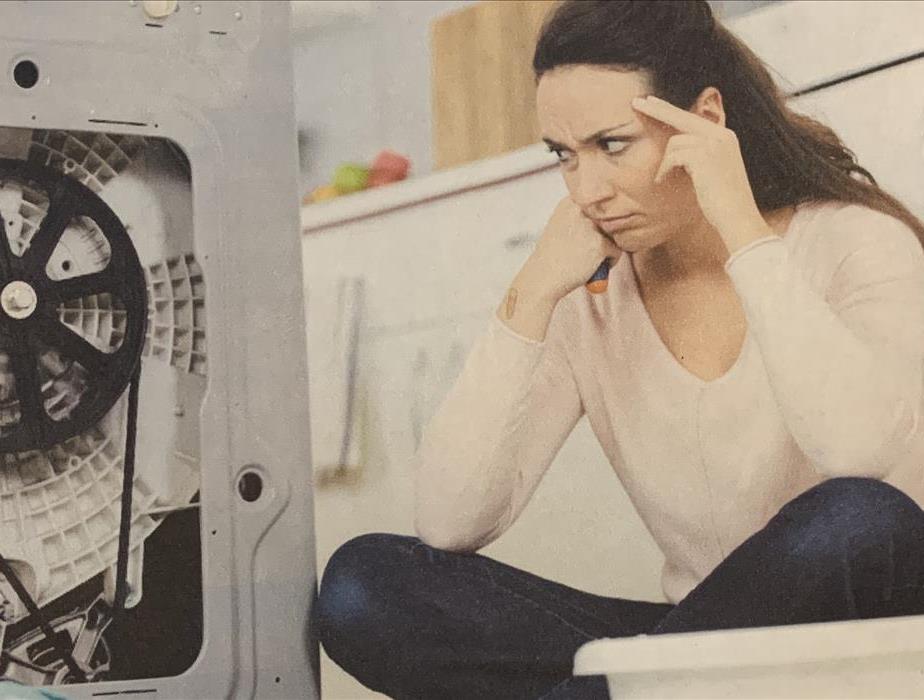 Broken appliance causing water damage to your home, kitchen, walls,floors.
Broken appliance causing water damage to your home, kitchen, walls,floors.
When water damage happens to your home, it van be a difficult thing to process regardless of he source.
However, when you discover appliances have been causing hidden water damage right under your nose, it can be even more frustrating to deal with. The good news is that through regular check-ins and inspections, homeowners can prevent this altogether.
Inspect These Household Appliances to Prevent Leaks
Hot Water Heater
The recommended lifetime of a hot water heater is anywhere between 10 and 15 years, but they have many components that can begin leaking before that. Hoses and pipes connected to the heater can begin to fail and cause water damage around the unit if it is not regularly inspected for leakage.
Refrigerator
The majority of refrigerators that are connected to a home's water line are connected via hoses in the back, which can easily lead to water damage that remains hidden until the refrigerator is moved away from the wall again- which might be a while.
Dishwasher
The same remarks about refrigerators can also apply to dishwashers, which move an even larger volume of water. Couple this with the fact that insurance won't always cover dishwasher leaks and it can cause an even larger problem. Pulling the dishwasher away from its cubby often is the best way to combat this.
Washing Machine
The hoses that connect the washing machine to the water supply should be checked once a month for leaks or any signs of wear and tear, as they are common culprits of leaks. Even if they look perfectly fine, they should be replaced every five years to be safe.
Air Conditioner
The condensation that builds up while the air conditioning unit runs is generally a small amount that is quickly drained away. When issues to the drain system arise, however, they can cause water damage to the unit as well as surrounding structures. Performing your regular HVAC maintenance as recommended is the best preventative, as well as checking it regularly when it is running often for performance issues.
If your home has been impacted by water damage or you'd like to put a plan in place in case it happens to you contact us to learn how we can help.
Rain Storms
5/25/2018 (Permalink)
Our late spring rain storms has brought on some damages to our roads and homes in the area. Please be careful out there. Here is a story from a mudslide from Alpine Meadows.
http://mynews4.com/news/local/two-small-mudslides-close-of-portion-of-alpine-meadows-road-near-squaw-valley
Two small mudslides have shut down a portion of Alpine Meadows Road.
One slide is at Bear Creek Drive and Alpine Meadows Road and the other is a the Five Lakes Trail and Alpine Meadows Road, according to the Placer County Sheriff's Office.
The road will be closed overnight, but is expected to be cleaned up first thing Friday morning.
After Flood damage recommendations
3/7/2018 (Permalink)
Here is a few tips from the EPA on what to do and not to do after a flood damage in your area:
https://www.epa.gov/natural-disasters/flooding
Limit contact with flood water.
Flood water may have high levels of raw sewage or other hazardous substances. Early symptoms from exposure to contaminated flood water may include upset stomach, intestinal problems, headache and other flu-like discomfort. Anyone experiencing these and any other problems should immediately seek medical attention. Do not use the sewage system until water in the soil absorption field is lower than the water level around the house. If you have a home-based or small business and your septic system has received chemicals, take extra precautions to prevent contact with water or inhaling fumes. Proper clean-up depends on the kinds of chemicals in the wastewater. Be sure children are protected from chemicals and diseases in flood water. Behavior such as crawling or placing objects in their mouths can increase a child's risk of exposure and sickness.
Standing Water
3/7/2018 (Permalink)
Here is another tip from the EPA about removing standing water in your home:
https://www.epa.gov/natural-disasters/flooding
Eliminate standing water where mosquitoes can breed
Mosquitos can sharply increase after a flood, due to the sudden availability of standing water which they require for breeding -- even very small amounts of water. As flood waters recede be sure to drain, overturn, or empty areas -- no matter how small -- to reduce mosquito breeding areas and help reduce the spread of mosquito-borne diseases.
- Get rid of standing water in rain gutters, old tires, buckets, plastic covers, toys, pools, or any other containers.
- Empty water from damaged materials that aren't usually outdoors, such as discarded furniture, household items, bookshelves, building materials, trash, etc.
- Drain wet areas and puddles of water, or fill them with dirt.
- More ideas for controlling mosquitoes
- Why? The importance of controlling mosquito-borne diseases, such as West Nile Virus or Zika
Avalanche and Flooding concerns
3/5/2018 (Permalink)
People all over the Truckee Meadows woke up to at least several inches of fresh powder March 3, 2018.
While that is a welcome sight, there are concerns this weekend that people not being careful could trigger an avalanche in the back country.
The Sierra Avalanche Center says there is "Considerable Danger" of an avalanche for Saturday, if skiers and snowshoers in the back country, aren't careful.
They are warning people, if they do go out into those areas this weekend, be aware. They say don't let "Powder Fever" get in the way of good judgment.
Please let's be careful out there while we are on the mountain for our safety and the safety of others. Over the weekend we had several people get caught in avalanches already. With the extra snow fall we will have to be mindful of the Truckee River flooding this spring as well.
Annual Snow Pack
2/1/2018 (Permalink)
Here is a story of our local snow pack levels in the mountains. At this same time last year we were well above average and that caused severe flooding in our area.
http://www.kolotv.com/content/news/California-gauges-snowpack-amid-dry-winter-472132353.html
California's water managers are carrying out their mid-winter snowpack survey as the winter's dry spell persists.
The Department of Water Resources on Thursday will carry out manual measurements of the Sierra Nevada snowpack. The snow in a good year supplies water to millions of Californians as it melts throughout the spring.
Electronic sensors show snow levels are about 30 percent of average statewide. Department of Water Resources spokesman Doug Carlson says water officials are concerned. Carlson notes there are still two months in the rainy season.
Last year, near-record rains in Northern California snapped a five-year drought in the state. Gov. Jerry Brown declared the state's drought over less than a year ago, in April.
Floods
1/26/2018 (Permalink)
Here is another great article about what flooding is and what you can do to help your family be prepared.
https://www.ready.gov/floods
Flooding is a temporary overflowing of water onto land that is normally dry. Flooding may happen with only a few inches of water, or it may cover a house to the rooftop. There are many possible causes of floods including heavy rain or snowmelt, coastal storms and storm surge, waterway overflow from being blocked with debris or ice, or overflow of levees, dams, or waste water systems, Flooding can occur slowly over many days or happen very quickly with little or no warning, called flash floods. Flooding can happen in any U.S. state or territory. It is particularly important to be prepared for flooding if you live in a low-lying area near a body of water, such as near a river, stream, or culvert; along a coast; or downstream from a dam or levee. Flooding can occur during every season, but some areas of the country are at greater risk at certain times of the year. Coastal areas are at greater risk for flooding during hurricane season (i.e., June to November), while the Midwest is more at risk in the spring and during heavy summer rains. Ice jams occur in the spring in the Northeast and Northwest. Even the deserts of the Southwest are at risk during the late summer monsoon season.
Basic Safety Tips
- Turn Around, Don’t Drown! ®
- Avoid walking or driving through flood waters.
- Do not drive over bridges that are over fast-moving floodwaters. Floodwaters can scour foundation material from around the footings and make the bridge unstable.
Just 6 inches of moving water can knock you down, and one foot of moving water can sweep your vehicle away.
If there is a chance of flash flooding, move immediately to higher ground.
If floodwaters rise around your car but the water is not moving, abandon the car and move to higher ground. Do not leave the car and enter moving water.
- Avoid camping or parking along streams, rivers, and creeks during heavy rainfall. These areas can flood quickly and with little warning.
Avoid bursting pipes (and costly repairs) this winter with these simple tips
1/8/2018 (Permalink)
Here is a nice article from an insurance provider about some helpful tips for this winter:
According to the insurance company Chubb, homeowners are more likely to experience water damage during the winter than any other time of year.
"In the wintertime, the water in the pipes gets cold; it freezes," Jim Magliaro, Risk Consulting Technical Leader at Chubb, told TODAY national investigative correspondent Jeff Rossen. "Water goes everywhere."
How can you prevent damages that could potentially run to thousands of dollars?
Insulate your pipes. You can buy simple insulation for about 25 cents a foot.
Replace rubber hoses. Check your washing machine to make sure the hoses aren't rubber. Steel-braided hoses are inexpensive, costing about $10 each.
Know how to shut off the valve under your sink. "Once a week, you look under the sink and you look for any puddles of water and move your hand along the pipes to see if there are any leaks," Magliaro said. If there are, shut off the valve.
Check for puddles behind your refrigerator. Many refrigerator leaks are due to the water line that feeds the refrigerator. Magliaro suggests you pull your refrigerator out once a month and look for puddles behind it.
Know how to shut off your water main. With the holidays approaching, many of us are leaving for vacation or visiting family. Experts say if you're heading out of town, you should shut off your water main. It's an easy way to prevent major leaks or bursts while you're away.
The main water shutoff valve is usually located at the point where the main water line enters the home. In homes with basements, it is usually in the basement. In homes that are on a crawl space or slab, it can be in the garage (if one exists), in a first-floor utility closet, or, in many Southern climates, outside of the home.
There are typically two types of shutoff valves to a water main: a gate valve (shown left above) and a ball valve (right above). Either is still used today, but the ball valve is becoming more popular. A ball valve is easier to use and shuts off water a little more quickly. With the ball valve, if the handle is in line with the pipe, it is in the “on” position; if perpendicular to the pipe, it is off.
Thank you
6/21/2017 (Permalink)
Here is another great example of our work from our staff:
"Your staff was so efficient and organized. I can not praise them too highly. They came when they said they would, they called when they said they would. They were incredible representatives of your company, especially Robert Harrison, crew chief."
Thank You,
Jane
This brings smiles to our franchise that another customer is happy with our work. This also just shows how much our employees will treat your home is if it is their own. It is also great that our office staff cares about our clients like family. Thanks again for all of the hard from the office, field techs and all the way to the crew chiefs who lead the way at the front lines of your personal home. Thanks again for the letter Jane and if anybody needs us to make it "Like it never even happened" do not hesitate to call.
 Safeguarding your home from water damage is easy this Fall with these insights from SERVPRO of Reno Southwest!
Safeguarding your home from water damage is easy this Fall with these insights from SERVPRO of Reno Southwest!





 24/7 Emergency Service
24/7 Emergency Service











